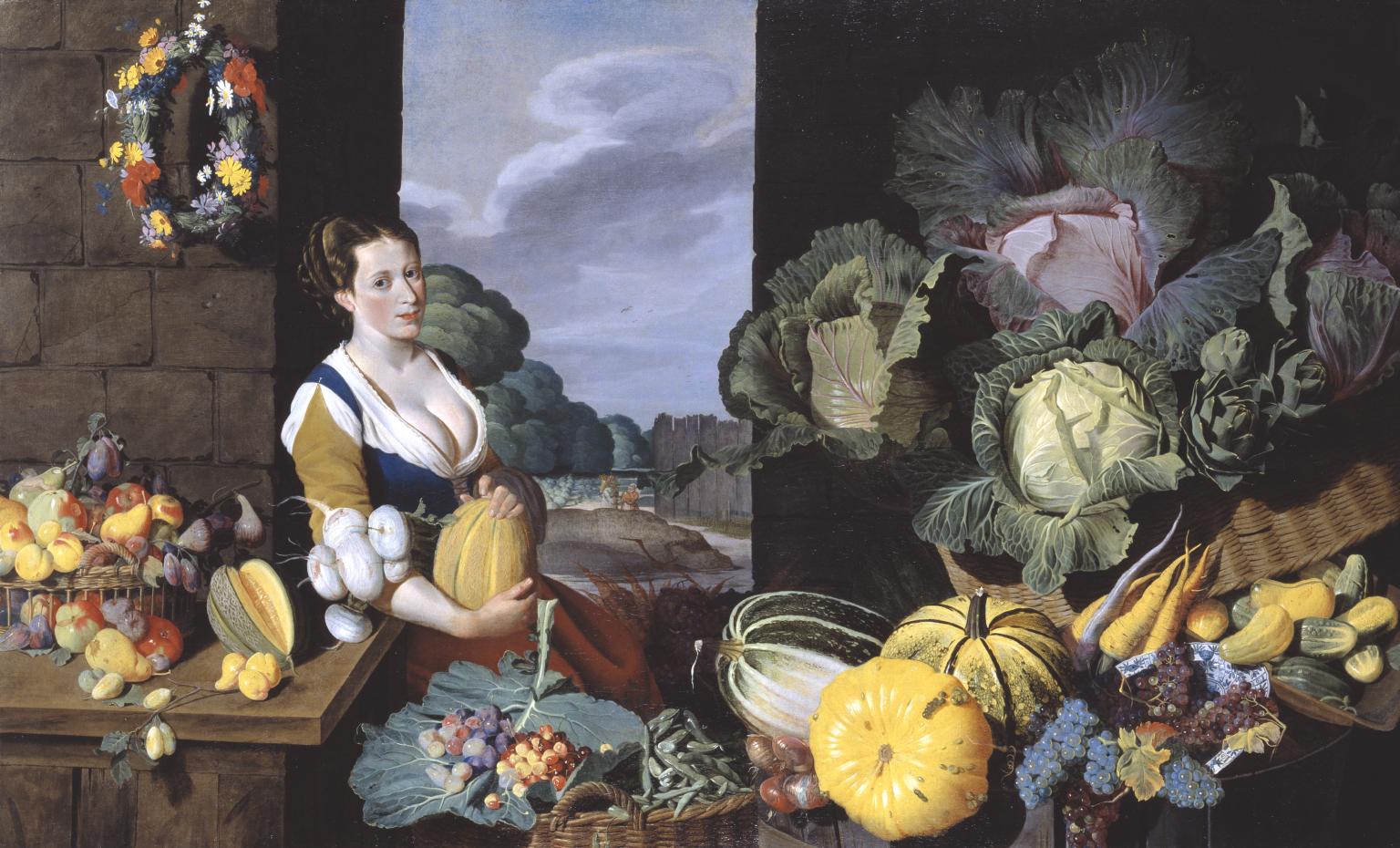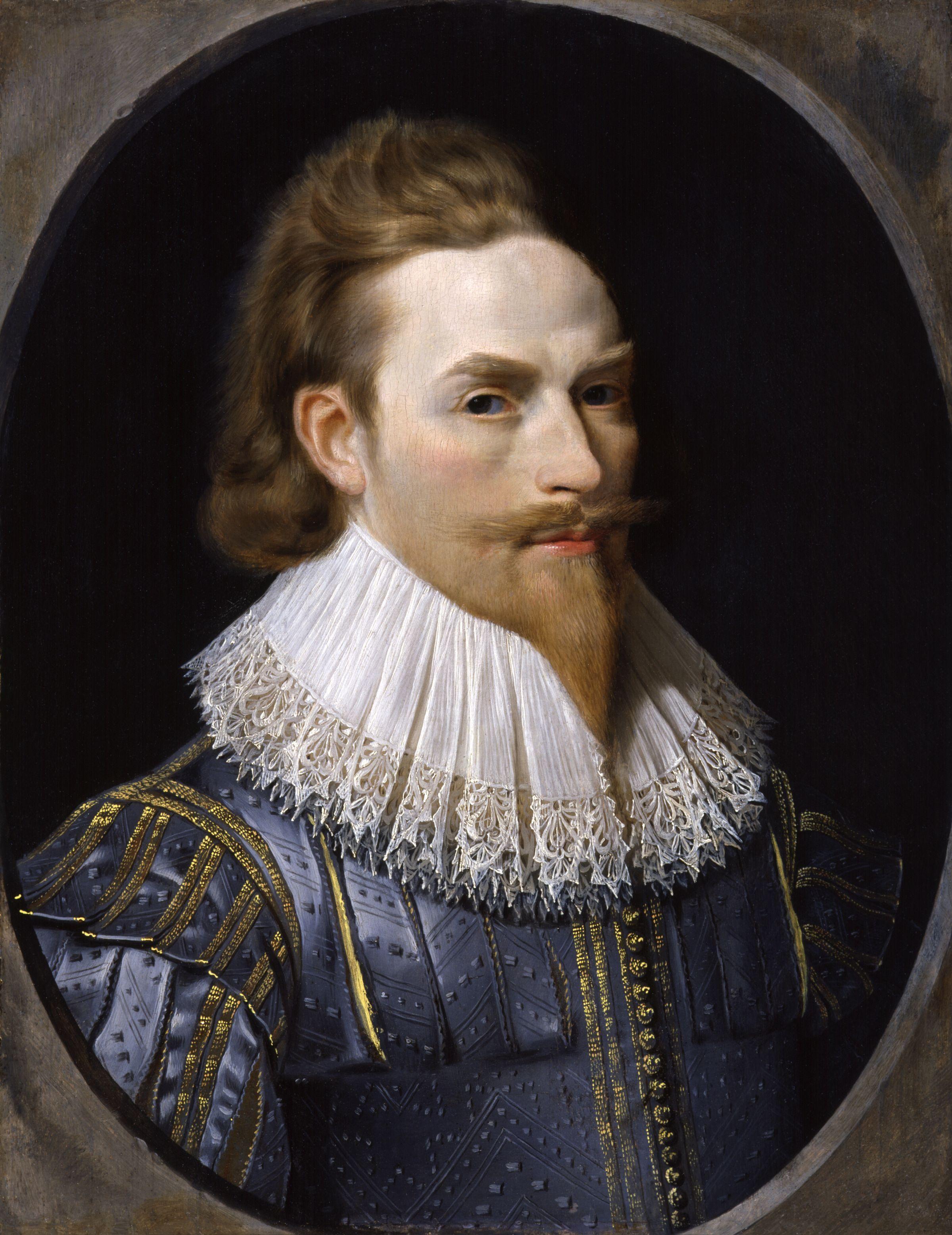Only nine of the English painter Sir Nathaniel Bacon's paintings survive. He was particularly known for his kitchen and market scenes, dominated by still-life depictions of large vegetables and fruit, often accompanied by a buxom maid, the most well known being the one we present today. Bacon is also credited with the first known British landscape, and also painted a self-portrait and a number of other portraits. He was created a Knight of the Bath in 1625 by Charles I.
The genre of the work derives from the Low Countries and no other English artist of the period explored the genre. Two other 'Cookmaid' pictures are known to exist. Such groups were often intended to depict the four seasons or the twelve months of the year, but it is not the case here - the picture combines vegetables and fruit that would have matured at differing times of the year, making this still life somewhat of a fantasy picture. Bacon, according to a letter from 1626, was growing melons at his estate in East Anglia, and he was known to have a keen interest in horticulture. The subject would most likely have had erotic connotations. The abundance of ripe melons surrounding the cookmaid echo her voluptuous cleavage.


 Nathaniel Bacon
Nathaniel Bacon